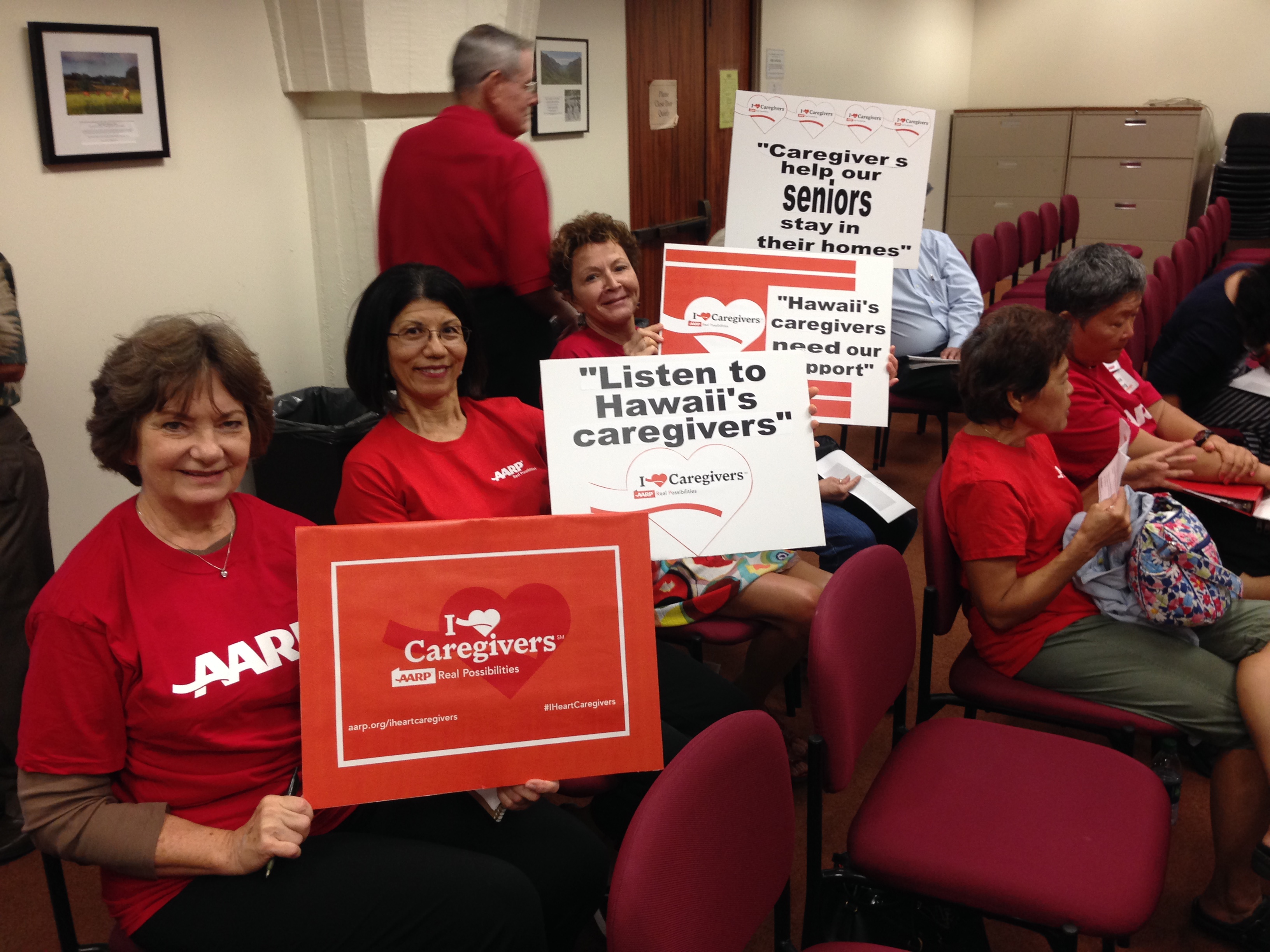AARP Hearing Center

Family caregivers in Hawaii provided 144 million hours of care – worth an estimated $2.1 billion –to their parents, spouses, partners, and other adult loved ones in 2013, according to AARP Public Policy Institute’s new report, Valuing the Invaluable: 2015 Update.
Family caregiving for relatives or close friends with chronic, disabling, or serious health problems so they can remain in their home is nearly universal today. In 2013, about 154,000 family caregivers in Hawaii helped another adult loved one carry out daily activities (such as bathing or dressing, preparing meals, administering medications, driving to doctor visits, and paying bills).
“This new report demonstrates the urgent need to do more to assist the 154,000 caregivers in our state,” said AARP Hawaii State Director Barbara Kim Stanton. “Some of the things that will help family caregivers include increasing funding for home and community based services through Kupuna Care, and establishing a statewide standard for hospitals to instruct family caregivers – at the time of discharge – in the tasks needed to care for loved ones at home.”
Family Caregivers in the Future
As Americans live longer and have fewer children, fewer family members will be available for older adults to rely on for everyday help in the future. In Hawaii, the ratio of potential family caregivers to the growing number of older people has already begun a steep decline. In 2010, there were 6.1 potential family caregivers in the islands for every person age 80 and older. By 2030, that ratio will fall sharply to less than 3 to 1 and is projected to drop further to just 2 to 1 in 2050 – among the most dramatic declines in the country.
Impact of Caregiving on Jobs, Money, and Health
Family caregivers report that the stress of caregiving affects their physical and emotional health, finances, and their jobs. In a 2014 survey of Hawaii residents age 45-plus:
- More than half (53 percent) said they are currently providing or have provided unpaid care to an adult loved one who is ill, frail, elderly or has a physical or mental disability.
- At least half of Hawaii caregivers report feeling emotionally stressed in general (63 percent) and stressed in trying to balance their work and their family (51 percent).
- More than three in five (61 percent) of Hawaii caregivers say they work or have worked full or part-time while providing care to a loved one.
- Nearly three-quarters (72 percent) of these working caregivers say they have had to go into work early or late, or take time off to care for a loved one.
- Many working caregivers have also had to take a leave of absence (39 percent), work reduced hours (19 percent), or give up working entirely (21 percent) to provide care to an adult loved one.
Strategies and Policies Needed to Help Caregivers
“Given the growing demands on family caregivers in Hawaii who provide unpaid care to elderly loved ones at home, AARP strongly supports a proposal that would help caregivers when their loved ones go into hospitals, and then transition home,” said Stanton. “We urge members of the Hawaii Legislative Family Caregivers Working Group, established by SCR 107 to examine the role of caregivers for patients released from hospitals, to support legislation requiring hospitals to instruct caregivers in the care they need to provide after their loved ones return home.”
Valuing the Invaluable: 2015 Update Methodology
The estimates in this report by AARP’s Public Policy Institute are based on a meta-analysis of 11 U.S.-based surveys of family caregivers conducted between 2009 and 2014. Estimates are based on about 40 million caregivers providing an average of 18 hours of care per week to a parent, spouse/partner, or other adult loved one, at an average value of $12.51 per hour. ‘Caregiver’ is defined as an adult age 18 and older providing care to a parent, spouse, or other adult loved one with their daily activities such as bathing or dress, preparing meals, and/or managing their finances, currently or within the last month.































































